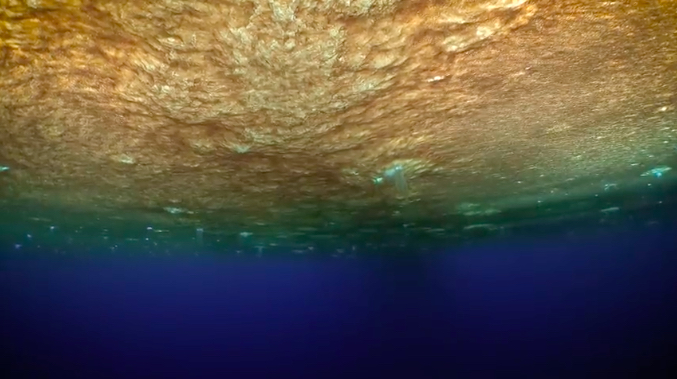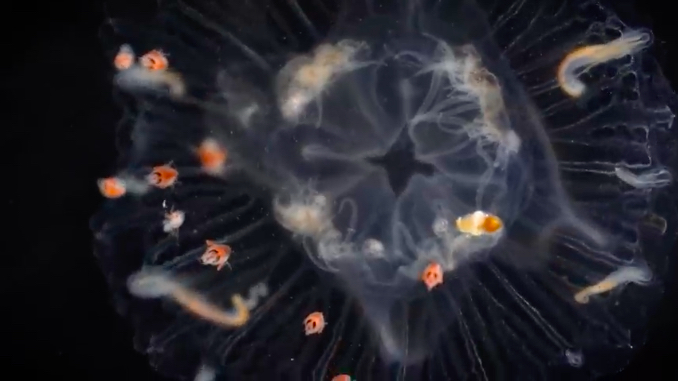Antarctica is one cold, remote place. Unless, of course, you're one of the species that live there. Then, it's home sweet home!
And if that idea sounds a little difficult to grasp, then look no further than the short film called Life Beneath The Ice for proof that it's true.
This seven-minute video is the result of a couple years of study in the Antarctic during 2018 and 2019 by an Australian research crew. The video itself was put together by Emiliano Cimoli, who is a researcher at the University of Tasmania in Hobart. Throughout the film, he shows in exquisite detail a variety of strangely beautiful creatures that flourish in this chilly domain just below the surface.
Light and algae

In this world, the 'sky' is a ceiling of algae! (Screenshot YouTube/Emiliano Cimoli)
A big part of the study was to examine the algae that live on the underside of the ice. As you'll see in the video, for these creatures, the 'ceiling' of their home is a cloudscape of algae. This growth is an important part of the food chain. And so is the sunlight that shines through the ice, which helps to kickstart the photosynthesis that the algae and phytoplankton live off.
Then it's on to the other animals that live here. In Life Beneath The Ice, you'll meet quite a few of them. A tiny, wing-flapping jelly known as a sea angel. Unusual creatures that look like a feather come to life. Various undulating comb jellies whose bodies are lined with pulses of colour like little disco lamps. And larger Antarctic jellies that pumps like transparent hearts.
These larger jellies are really fascinating. If you look closely, you can see the tiny orange crustacean parasite that live in their 'bell' (main body), as well as even a recent meal in their belly. (That's the kind of insight that you can get when an animal is transparent!)
And then, around the 4:40 mark, the filmmakers begin to show you shots of the drones that they used to film all of this incredible nature. All in all, this movie packs a lot into seven minutes. We hope that you enjoy it!
 Exactly how many creatures are you looking at here? This video will introduce you to some rare and beautiful animals! (Screenshot YouTube/Emiliano Cimoli)
Exactly how many creatures are you looking at here? This video will introduce you to some rare and beautiful animals! (Screenshot YouTube/Emiliano Cimoli)









